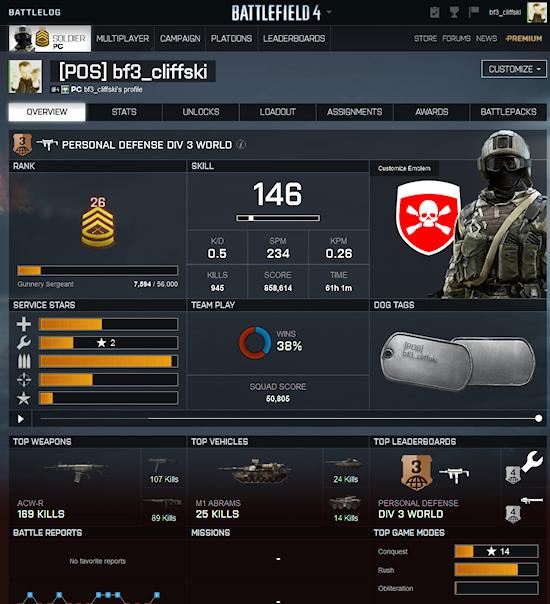I’m currently playing 3 games. Tropico 5, Company of heroes 2 and Battlefield 4. When I’m playing Battlefield 4 or COH2, I feel like I’m achieving more than T5. Why? Stats and achievements. I know…It’s crazy. When achievements first started, it didn’t seem like a bad thing. game designers would use them to do some fairly clever stuff. You can encourage people to replay a level 9and get more fun from it) by having a special achievement to play it a certain way. You can suggest people experiment with unloved or new and experimental game modes and styles by tying achievements to them. This is a great idea.
Also, slightly spookily, you can use achievements tot rack player progress. Some players get upset if the game tells the develop every move you make, but if it can do so as it tracks your ‘achievements’ we don’t mind. For the designer, this is awesome. You can see if everyone gets stuck on level 6, or not that the best players all use the same gun, so it may need nerfing…
The thing is, F2P designers have taught the paid gaming designers how to use achievements to encourage players to keep playing again and again and again and again… And although to a lot of people that’s no bad thing, it can have drawbacks. here is my BF4 stats overview (just 1 screen of about 50 showing my play stats).

The thing it doesn’t point out is that I’ve put in 92 hours of time on that game. 92 HOURS. And in terms of unlocks, stats, awards, leaderboards, achievements, prizes, battlepacks, rewards, and whatever else there is, I reckon I’ve ‘unlocked’ or ‘achieved’ about 5% of it. I might suck at games, but even so, raw calcs suggest I need to spend 1,800 hours to ‘finish’ the game.
Now I get it, that’s not the point, hardly anyone unlocks everything, but there are two drawbacks here.
1) If equipment is tied to unlocks, that means 95% of your players aren’t getting the full game. I have no idea what most of the weapons are like in BF4, I haven’t unlocked them. I didn’t even get to more than 20% in BF3 before BF4 came out…
2) Some people have OCD. I have it a *little bit*. When I see those greyed out and locked items, it DOES make me want to keep playing. I cannot imagine the life of a real OCD gamer faced with screens like these.
So I guess it’s a balance, I *LOVE* achievements and stats, I’m the guy who made getting a job and romantic relationships into a stats based game. I do wonder if sometimes, the designers are just overdoing it though. The stats screens for Company of Heroes 2 are definitely designed by someone whose wife ran off with an OCD sufferer. That’s the only explanation that makes sense.
I blog a lot about advertising. If you’ve read the books I keep pimping you’d know that modern advertising is fucking scary. Don Draper isn’t around any more, they test ads using MRI scanners. The hottest jobs in big business aren’t in engineering or finance or old-fashioned marketing. They are in neuroscience and psychology. People are getting *really good* at working out human behavior and forcing us to do things without us even knowing. I find some games pretty addictive, but they haven’t even got going yet. How addictive and fine tuned will BF5 be or BF6? We have already had people collapse and die after marathon gaming sessions. I suspect that’s going to become more and more common. Sadly.